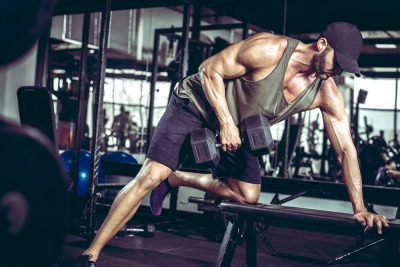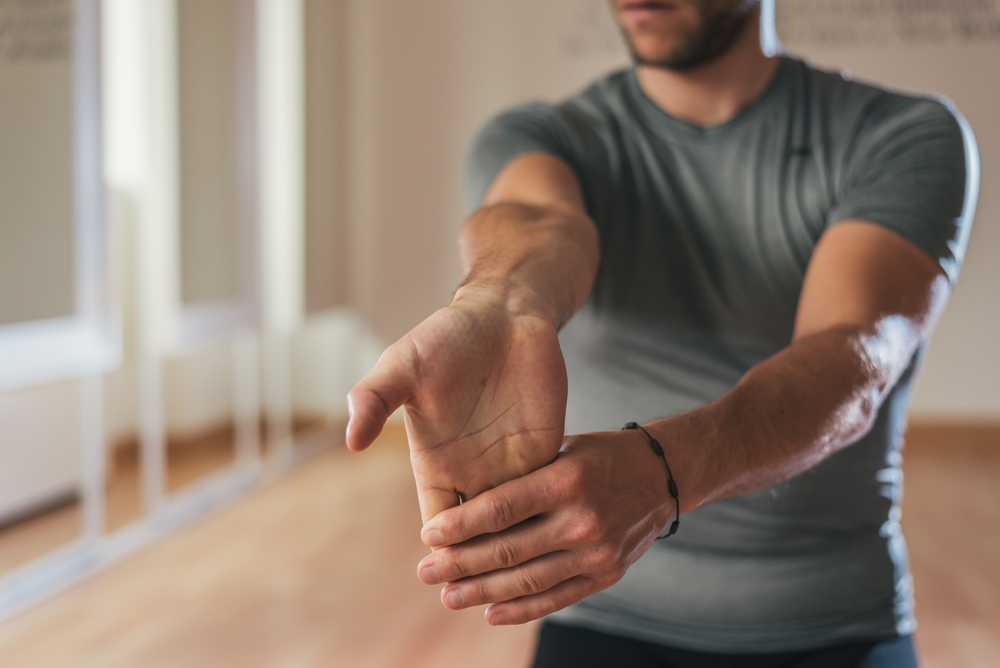Forearm exercises have numerous benefits, from adding strength to the muscles to stretching your wrists, hands, and even elbows. These muscles are used for the most everyday activity, like opening a door or even fetching an item, and these muscles are always working. They are also very efficient when it comes to sporting activities like basketball, golf, and even racquetball. Engaging in forearm exercises can also heighten the strength of your grip, which is, in turn, closely associated with the substantial capacity in the upper region of your body. Having a firm grip implies that you can hold and lift things very quickly. Also, you are bound to have more strength after a workout, which would result in an overall muscle in your body.
The forearm muscles
The forearm muscles can be divided into three parts. These parts include:
- Brachioradialis: Brachioradialis is known to be huge muscles found on the upper and lower parts near the elbow on the outer part of your arm. It aids in the movement of your lower arm when your palm is facing downwards.
- Wrist Flexors: These muscles can be seen on the inside of your lower arm. It aids in the flexing of your wrists.
- Wrist Extensors: These muscles can be found on the outside of your lower arm. It aids in the extension of your wrists.
Wrist flexors are often seen as the biceps found in your lower arm, while the wrist extensions are seen as the triceps located in your lower arm.
Visually impressive
Having forearms that are covered in popping thick veins signifies strength for most people in the world. You can develop biceps, but these can be regularly included in your clothes, thereby reducing your look of strength and power. These powerful arms are near to impossible to conceal and can be easily identified when you hold an item or reach out to great your fellow individual.
How to
For every exercise, you must perform at least three sets of at least eight repetitions. Engage in this workout three to three times every week to get superb results. These exercises can be done individually, before you work out, or even as part of your workout routine. Warm out and improve the flow of blood to your arms before you engage in forearm workouts. You can do this by rotating your arms in a circular motion for some seconds.

With dumbbells
Start with a five to ten pounds dumbbell. As time progresses, you begin to add to your weight gain. Make sure you have a firm grip on the dumbbell while you are exercising. Even when you do not have access to dumbbells, you can use a bottle of water or even a can or any item.
Palms-up wrist curl
- Find a lovely stool or chair and get seated, place your wrists directly on your bent knees while grasping a dumbbell in both your hands.
- While holding the dumbbell, lift your arms high while maintaining them still.
- Maintain this position for a little while. After this, reduce your hand to the original point.
Palms-down wrist curl
- Find a stool or a chair and get seated. Place your wrist onto your knees and keep them facing downwards. Grasp a dumbbell in both arms and maintain a still division while you increase your hands high.
- Maintain this position for a little while. After this, place your hands back to the original post.
Grip crush
- Begin with getting a stool or a chair. Place your left wrist directly on your knees while grasping hold of a dumbbell.
- Gradually open up the dumbbell in such a way that it gently moves between your fingers.
- Squeeze your hands while you lift your wrist, and you tighten the dumbbell.
With machines
Behind-the-back cable curl
- Grasp a hand pulley while putting a particular foot in front of the significant other.
- Make a few steps farther away from the pulley.
- Gradually twist your arms, thereby reaching it to your shoulder.
- Maintain this position for a little while. After this, you lower your arm to the original point.
Towel cable row
- Place your towel in a pulley and position yourself directly at its front.
- Grasp a part of your towel in both your hands.
- Pull the blades of your shoulder at each other while drawing the towel to your torso.
Without weights
Pullups
For this particular exercise, you  would require a bar that can handle your entire body weight.
would require a bar that can handle your entire body weight.
- The most common hand position is using your palms while facing the opposite direction. However, you can decide to place your palms on your path, and you must choose what suits you the most.
- Jumpstart your forearms by grasping the bar very tight or making use of a thick bar.
- Carry yourself in the direction of the bar.
- As you progress, you can intensify this workout by using a towel to lift yourself off the ground.
Dead hangs
- Hold onto the bars while staying in that position for a long time till you can’t endure any longer.
- Make sure your elbows are somewhat bent to get the full results.
- This exercises aids in the development of the strength of your grips and is far more comfortable than pullups.
Forearm pull
- Grip the weight bar included in a pulley at the same level with your shoulder.
- Make sure your palms are in a downward direction while your arms are pulled near your chest.
- Pull the weight bar as low as it can go.
- Maintain this position for a while. After this, you can then return to the original post.
Farmer’s walk
To intensify this exercise, you can tie a towel by the handles of the weight.
- Hold heavyweights on both your arms kept by your side.
- Keep a good form; maintain an open torso while your shoulders are pulled down.
- Take a walk for this exercise, or you can walk on a spot for 25 to 45 feet for a set.
- Make sure you perform three to six sets of this exercise for maximum results.
At home
Forearm squeeze
Forearm grips are perfect for home exercises. You can make use of the forearm grips or a squishy ball for this exercise.
- Stretch your fingers to tighten your forearm grips or squishy ball.
- Maintain this position for three to five seconds after this; you relax your hands for some time.
- Continue this procedure for ten to fifteen minutes.
- Repeat this procedure two to three times every day.
Fingertip pushups
- Face downwards while on a bench or any item.
- Lower your fingertip to the floor.
- Gradually lower your torso to the surface while folding your elbow to a right angle degree.
- Return to your original position.
- Repeat this procedure for three to four sets of eight to twelve repetitions.
Crab walk
- Move-in a reverse method while maintaining a tabletop pose.
- Put your hands right below your shoulders while your fingers are in a forward direction.
- Place your ankles right below your knees.
- Move forward on both your feet and your hands for at least a minute.
- Repeat this procedure for as long as you can.
Building a routine
These forearm exercises can be done individually or combined with your regular workout routine. You can begin by performing with some of these workouts and then later intensify the activities by adding various other types of exercises. If you implement these exercises in addition to stressful engagements, you must take them gradually to prevent an injury to your muscles. Engage in these exercises for a short period and later engage in more extended periods some days in a week. Make provision for more extended resting periods when you have participated in intensive forearm exercises.
Benefits
Regularly performing forearm exercises can increase the strength in your arms and, most notably, your wrists. Having holds of objects would not be difficult, and you are not prone to injuries. Also, you would have more strength for weightlifting.
Cautions and modifications
If you are still wondering where to start this exercise routine, you should visit a fitness trainer or expert for more advice. They can help answer your issues with forearm exercises, create a specially made method for you, and ensure that you carry out these exercises correctly. If you begin these exercises, you must work with the ones suitable for your body. Make sure you are gentle and subtle with your body to avoid complicating injuries. If you begin to experience excess pain and aches in your body after performing these exercises, you must stop playing them and visit your therapist. Once you experience sores when you finish exercises, it is highly recommended that you put ice on the affected area. Once you begin to notice any form of injuries or complications that could have developed as a result of forearm exercises, you must visit your doctor and avoid engaging in the activities for a while.
Conclusion
Forearm exercises are recommended when it comes to strengthening you’re your grip and muscles. There are various types of activities that aid in strengthing your grip and muscles. They include forearm squeeze, pullup, farmer’s walk, dead hangs, and crab walks.








COMMENTS